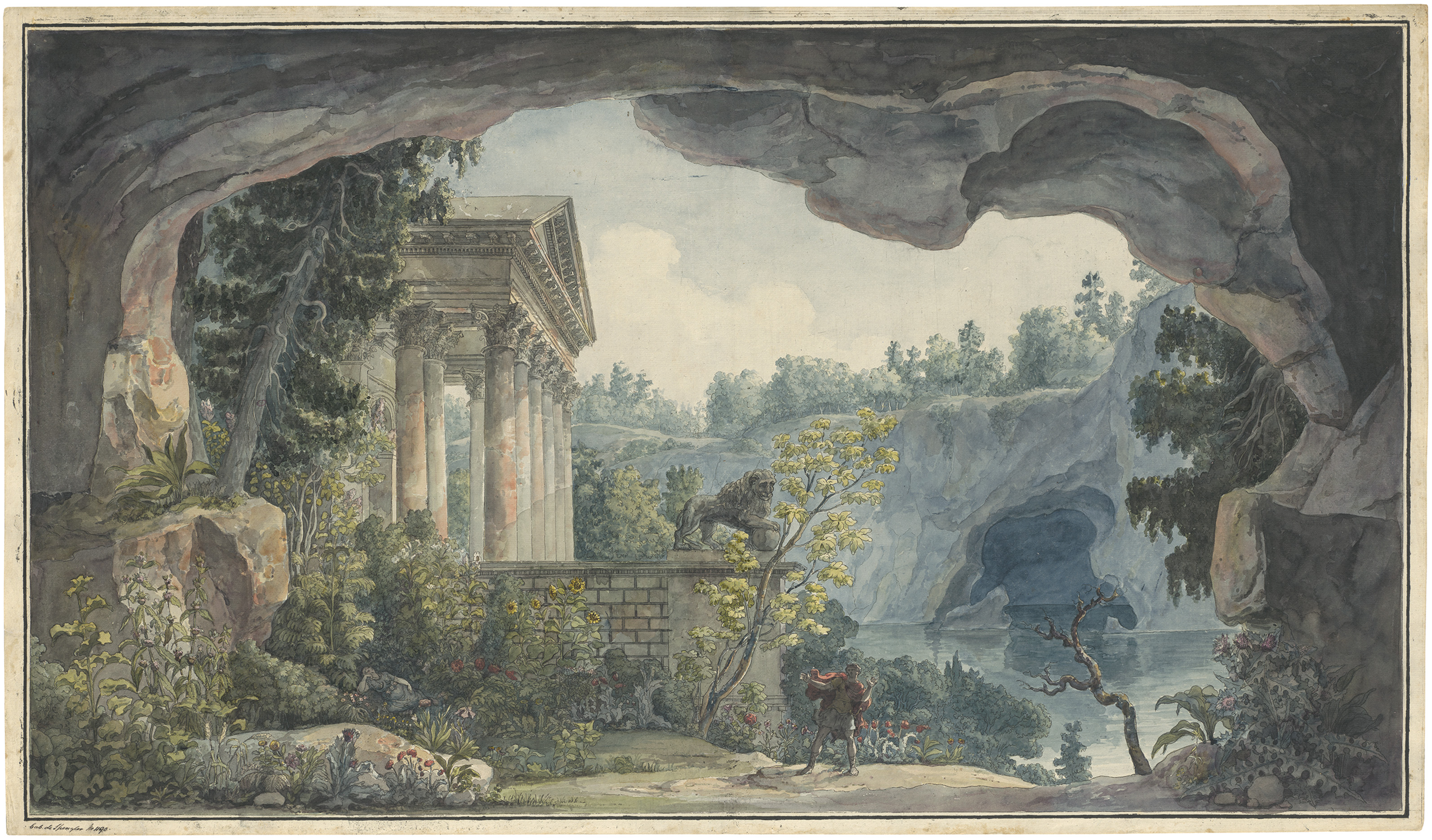Loading the page ...
Louis Jean Desprez
(1743 Auxerre – 1804 Stockholm)
After. Set for the Opera Frigga. Watercolour over outline etching. 54.3 x 92.7 cm. (1787). Exhibition catalogue Louis Jean Desprez. Tecknare, Teaterkonstnär, Arkitekt, Nationalmuseum, Stockholm 1992, fig. p. 82.
This highly impressive monumental outline etching is exceedingly rare, only a few impressions having survived. It shows the set designed by Louis Jean Desprez for the Nordic opera Frigga, the libretto for which was written by King Gustav III of Sweden. In 1784 the theatre-loving monarch called Desprez in the function of a theatre architect and stage designer to Stockholm, where the artist devised decorations for the royal theatre as well as for court festivities, carousels and other celebratory events. Although Desprez’ appointment was originally limited to two years, his achievements in a very short space of time earned him such a reputation that his contract was extended in 1786 for a further twelve years. Numerous extant stage designs for the Stockholm playhouse, the opera house and the two court theatres at Drottningholm and Gripsholm testify to Desprez’ restless activity. During his reign from 1771 to 1792 Gustav III made intensive efforts to promote an independent national theatre culture. To this end he composed libretti for historicising plays and operas, the hallmarks of which were a vibrant national consciousness and a sense of heroism.
In 1787 Desprez was commissioned to design the set for the historical comedy Frigga, which shortly after was also premiered as an opera. Through the opening in a huge rock cave we can see on the left, in sharply foreshortened perspective, an ancient temple supported by Corinthian columns. Visible on the right is a little lake, the motionless surface of which is ringed by a steep rocky bank. The entire scene radiates a dream-like, enraptured atmosphere and is extraordinarily evocative. The heroine Frigga lies asleep in the left foreground, almost hidden by rampant vegetation consisting of shrubs, thistles, sunflowers and roses. A young hero stops in his tracks as he catches a glimpse of her. The visual succinctness of this visionary dream world is considerably intensified not least by the monumental format of the etching.
Desprez is at the peak of his art as a stage designer here. He must have been intrigued by the picturesque symbiosis of bizarre rock formations and stage-like architecture, because he used this imagery on several occasions. The three earliest versions arose between 1779 and 1784, when the artist was still in Italy and paid a visit to the grotto at Polignano in Puglia. In his early period in Sweden, Desprez employed the same motif for the operas Ariadne on Naxos, Armida and Frigga, which were staged in 1786 and 1787. He evidently regarded the present stage design as particularly successful and so decided to have a reproductive print made of it. Desprez left the execution of the outline etching to Hans Gottlob Hensigen (1766–1805), of whose life very little is known. The subtle colouring is of outstanding quality and was the work of another of Desprez’ students, the Swedish architect, painter and draughtsman, Per Estenberg (1772–1848), who was active in Desprez’ studio between 1791 and 1802.
Minor ageing and slight traces of handling, minor defects along the margins but otherwise in very good condition; the colouration is superbly luminous. A further impression of the present etching painted in watercolours is in Drottningholm’s Teatermuseum. From the collections of Johan Conrad Spengler, Director of the Royal Museum and the Art Gallery in Copenhagen (Lugt 1434, its auctioning in October 1839, Copenhagen, no. 1190) and Benjamin Wolff (1790 Copenhagen – 1866 Engelholm, Lugt 420).
Contact us for further information